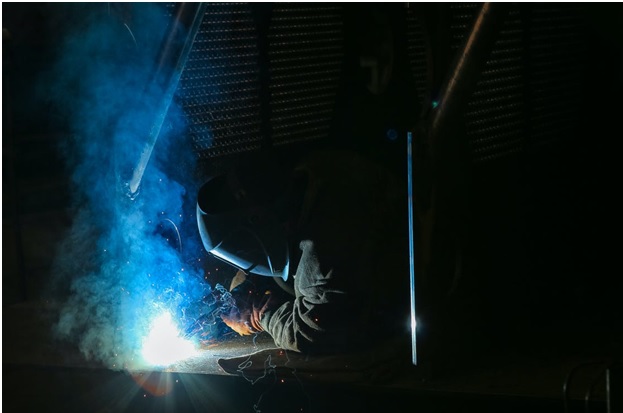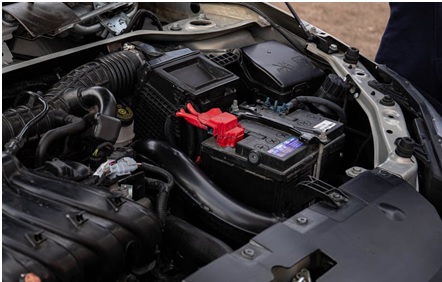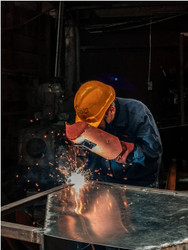Assessing Flexible Welding Cable
11th Jul 2022
Welding is an intensive job that is often performed outside, in the elements, and on a job site. In construction and many other industrial applications, welding must be performed on-location and cannot be done offsite.
As a result, it’s important that welding cable that’s used is not only appropriate for the specific type of welding, but for the conditions that surround the work location.
Consequently, flexible welding cable becomes an imperative - but that’s far from the only trait you’ll want to look for. Here’s what you need to know.
Flexible Welding Cable: Why It’s Necessary and How It’s Created
The first and most important thing to address here is the prevalent use of the term “flexible welding cable.” There are few other types of electrical wire and cable that are so marketed (if there are any) so it bears some note here why this is the case.
So why is it often called “flexible” or “highly flexible” welding cable? Because it’s often very thick and because, as stated, welding often needs to be performed on-site.
Imagine using a heavy, rigid cable that’s too stiff to be maneuvered into place on-location. That would effectively make it impossible to execute the welding application at hand.
Since welding cables must often be manufactured in fairly heavy gauges (see below) it becomes necessary to make them as flexible as possible. Wires and cables as thick as some welding cables are would be impossible to bend or flex (manually, at least) if they were made with heavy-gauge constituent conductors.
So what manufacturers do is scale down the diameter of the individual copper conductors used to create highly flexible welding cable.
Take, for instance, our 4/0 welding cable, the thickest, heaviest welding cable gauge we offer. This welding cable has a .720” nominal diameter and weighs almost a pound per foot of length. It weighs 734 pounds per 1,000 feet.
As you can imagine, it would be very difficult to work with this cable if it were not flexible - so the manufacturer made it with very thin copper conductors. Over 2,000 strands of pure copper conductors go into the creation of this cable (2,014, to be precise).
As a result, the thinner conductors keep the welding cable flexible even as both the diameter of the cable and the weight increase.
This keeps the cable better suited for manipulating and adjusting on location, despite the fact that it is heavy and thick.
Welding Cable Gauge
The 4/0 welding cable above is rated at 600 volts and is suitable for use between temperatures ranging from -50℃ to 105℃. As stated, it’s also fairly thick, with a nominal diameter of nearly three-quarters of an inch.
Using a welding cable (or any cable) or the appropriate gauge for an application is crucial. The reason for this is that using an improper gauge can lead to rampant heat resistance, which can adversely affect the ability of a conductor to carry a current and much worse. It can melt the insulation of the conductor, increase the risk of electric shock, and even cause electrical fires.
Many welding applications require fairly heavy voltage and current loads. In such high-voltage applications, it’s even more important to use a cable that is rated to safely handle the electrical potential in question.
Think of voltage as how much force is pushing the electrical current along a conductor. The higher the voltage, the more the electricity is getting “pushed” through the wire. Therefore, it’s easier for a cable to overheat under high-voltage conditions than under low-voltage conditions.
Something else to consider is the operational inefficiency and cost of using a welding cable that’s too big for a given job. It’s not necessarily dangerous to use a cable that’s too big, as it will be able to handle the voltage and duty cycle, but it does cost more money and will be harder to manipulate due to its greater weight and size.
Consequently, you should only ever use cables and wires that are rated as appropriate for the chosen application.

Insulation Quality
Insulation quality is also another important consideration when it comes to assessing or choosing a welding cable.
Flexible welding cables are made with a wide range of insulation materials, but ours is made with EPDM or ethylene propylene diene monomer synthetic insulation.
EPDM is a highly serviceable electrical insulation material for flexible welding cables for a variety of reasons. For one, it is extremely flexible and remains flexible at cold temperatures - down to as low as -40℃ (though, as stated, ours is rated to -50℃).
EPDM is also highly resistant to a wide range of different conditions. For instance, EPDM is highly resistant to ozone, high and low temperatures, water, and other polar liquids. EPDM is also very resistant to ultraviolet light. Although EPDM is generally not considered resistant to oil and gas, our welding cables are.
In addition to being fairly resistant to a wide range of chemical and environmental factors, our welding cable is also fairly abrasion resistant, which is also important in terms of welding. Job sites can be demanding and unforgiving, with many present hazards. As a result, physical durability is another general trait to look for in flexible welding cable and ours delivers.
Additionally, because of the many unique attributes our welding cable possesses, it is useful for many more electrical applications than just welding.
Multi-Purpose Versatility

Because our welding cable is ultra-flexible, physically durable, and resilient to UV, weather, and a wide range of other chemical factors, it is also useful for many other applications.
For instance, our welding cables are useful as leads for motors, generators, and batteries. Because they are suitable for use as electrical leads, they feature the customary black and red insulation that is typical of battery cable.
In addition, because they are resistant to weathering, moisture, extreme temperatures, and UV light, they are also suitable for use in solar arrays as photovoltaic or PV cables.
If you have any questions about our extra flexible welding cable, its attributes, or any of the uses for which it is suitable, please do not hesitate to reach out to our customer service team at 800-262-1598 or at Sales@EWCSWire.com.

